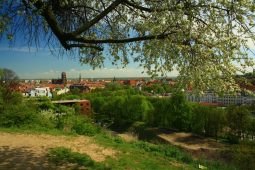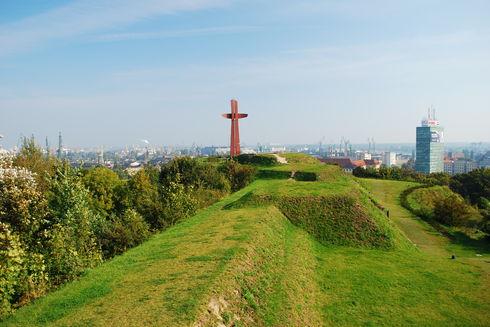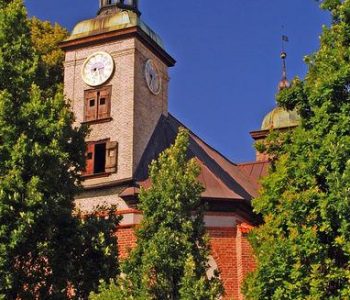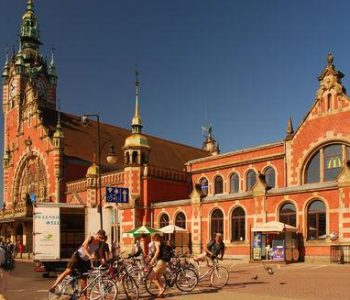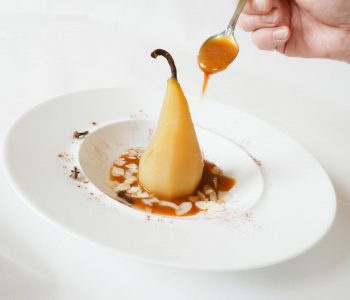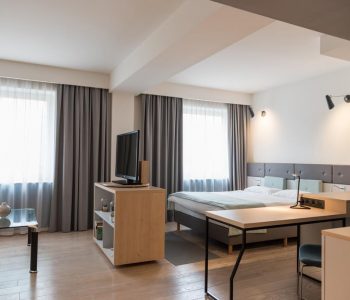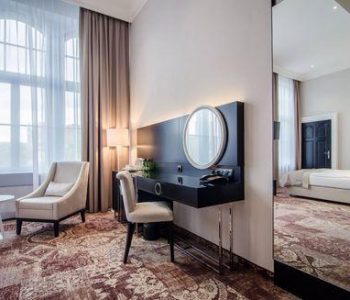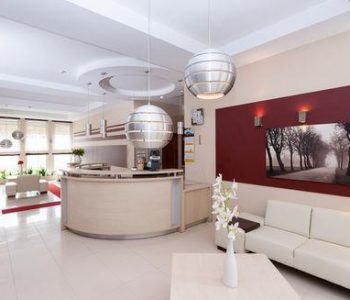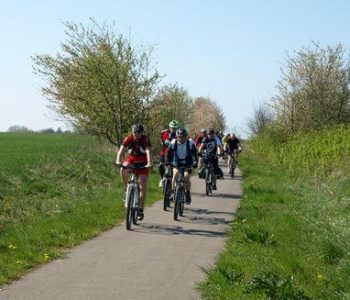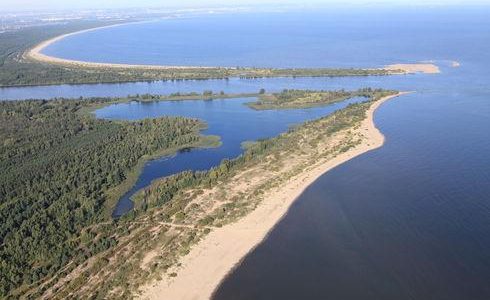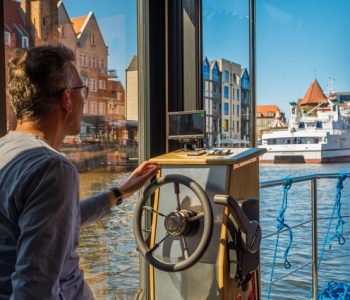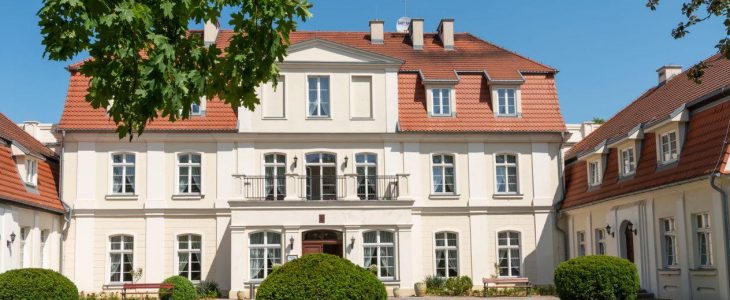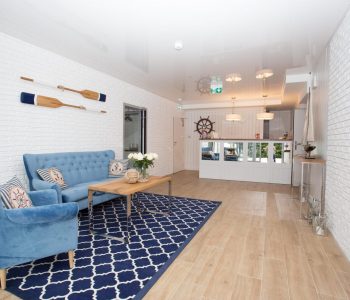The name Grodzisko did not appear until after World War II; the location was previously referred to as Gradowa Hill. The origins of the Grodzisko terrain are not well known. The first written mentions come from the 14th Century, when the area was under the control of the Teutonic Knights. It hosted the Teutonic garden and a small hospital for patients with infectious diseases with a chapel, which was later transformed into the Corpus Christi Church. In 1454, after Gdańsk was returned to Poland, the Grodzisko terrain fell under the control of the city. However, there is no evidence of any activities of the Gdańsk inhabitants in this area until the end of the 16th Century. The war with King Stephen Báthory of that time turned the attention of the City Council to the hazard entailed by the lack of protection on the hills near the city. Initial plans were made as early as the beginning of the 17th Century, but the lack of funds delayed them for over half a century. In 1655, due to the growing conflict between Poland and Sweden, the decision was made to conduct the work serving the said protection. This way, Grodzisko received the Jerusalem and Rifle bastions, which were to defend the city from the north and west, along with the enforcements of Bishops’ Hill and Old Town. The fortifications were not tested, since the King of Sweden did not attack the city, which wassatisfied by the blockade. The work on the reinforcements was restarted after the war, in 1660. This was the time of the creation of the Low Rifle Bastion, the Neubauer Bastion and the moat. The outskirts were equipped with embankments and semi-bastions in the direction of Bishops’ Hill. Near the end of the 17th Century, Grodzisko was connected with the neighbouring Old Town bastions through embankments. The fortifications played their role perfectly during the war with the Prussian and Saxon armies at the beginning of the 18th Century. Although the city was forced to capitulate, the Grodzisko fortifications were not conquered.
After the second partition of Poland in 1793, Gdańsk found itself under the rule of Prussia and became a provincial city, while the fortifications fell to the control of the Prussian administration. This made Grodzisko fall into ruin, as it was not renovated for a long time. It was not until the beginning of the 19th Century, when the French army was approaching, that the Gdańsk fortifications were quickly renovated. Although Grodzisko itself was under fire, the battles were conducted more on its outskirts. After the entry of the French army into Gdańsk, Napoleon Bonaparte, who arrived several days later, visited the Gdańsk fortifications and ordered several changes, appreciating their functions. His guidelines covered the so-called Senarmont Lunette (a ground rampart extended to the north) and the Napoleon Redoubt, the largest brick structure in Grodzisko. Due to. Gdańsk fell under siege once again, this time by the Russian and Prussian armies. Grodzisko itself was not in the centre of the battles, which were conducted on the outskirts, much like the previous ones. After a year under siege, the city capitulated and once again found itself under Prussian rule. Napoleon’s defeat, the fortification work was not completed
Besides slight changes, the Grodzisko fortifications remained the same until halfway through the 19th Century, when work aimed at modernising the Gdańsk fortification began. Some of the unused fortifications were deconstructed, the existing elements of the city’s defence system were modernised. Parts of Grodzisko were connected with underground passageways, and a place for gunpowder production and barracks were built. The surroundings of Grodzisko also underwent changes: a railway was built, the moat and embankments were torn down, and there was the construction of cemeteries and buildings for public use. In 1910, a radio station was built in Grodzisko. Since 1920, the status of the Free City of Gdańsk entailed the deconstruction of the ground enforcements and certain military buildings, while others were adapted for urban purposes. During World War II, some of the Grodzisko defence buildings were transformed into shelters for civilians. After the war, some of the buildings in Grodzisko were occupied by the militia. Others fell into ruin, as they were left without care. The destruction was additionally affected by the expansion of the streets neighbouring Grodzisko. The “Grodzisko” Park of Culture and Recreation was created within the area of the former fortifications during the nineteen nineties, while the “Gdańsk Fortress” Cultural Park of City Fortification was created in 2002; its objectives include the “Hewelianum” project. The Millennium Cross was set on Gradowa Hill in 2000.
Foundation of the “Hewelianum Centre”
The “Hewelianum Centre Programme” planned the creation of an innovative education and recreation centre in Gdańsk’s Fort, located on Gradowa Hill (used to called “Grodzisko”). Implementation of this idea allowed the appearance of new science centre that is unique in Europe, thanks to using latest technologies in interactive exhibitions and its location – the historic buildings of former fort. Since the year 2014 in Hewelianum Centre there are seven multimedia and interactive exhibitions. In the future Hewelianum Centre plans to create a planetarium.
Galeria
Warning: Attempt to read property "ID" on array in /home/klient.dhosting.pl/intui/pomorskie-travel.intui.eu/public_html/wp-content/themes/pomorskie-travel/single-poi.php on line 163
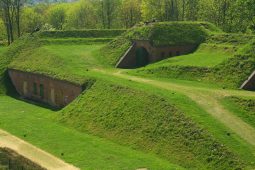
Warning: Attempt to read property "ID" on array in /home/klient.dhosting.pl/intui/pomorskie-travel.intui.eu/public_html/wp-content/themes/pomorskie-travel/single-poi.php on line 163
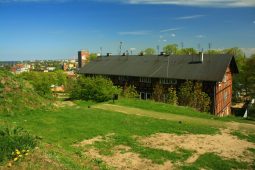
Warning: Attempt to read property "ID" on array in /home/klient.dhosting.pl/intui/pomorskie-travel.intui.eu/public_html/wp-content/themes/pomorskie-travel/single-poi.php on line 163
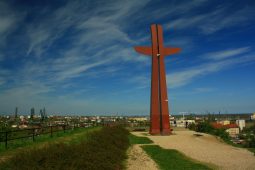
Warning: Attempt to read property "ID" on array in /home/klient.dhosting.pl/intui/pomorskie-travel.intui.eu/public_html/wp-content/themes/pomorskie-travel/single-poi.php on line 163
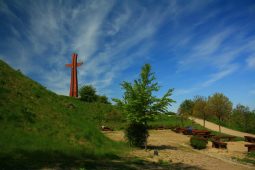
Warning: Attempt to read property "ID" on array in /home/klient.dhosting.pl/intui/pomorskie-travel.intui.eu/public_html/wp-content/themes/pomorskie-travel/single-poi.php on line 163

Warning: Attempt to read property "ID" on array in /home/klient.dhosting.pl/intui/pomorskie-travel.intui.eu/public_html/wp-content/themes/pomorskie-travel/single-poi.php on line 163

Warning: Attempt to read property "ID" on array in /home/klient.dhosting.pl/intui/pomorskie-travel.intui.eu/public_html/wp-content/themes/pomorskie-travel/single-poi.php on line 163
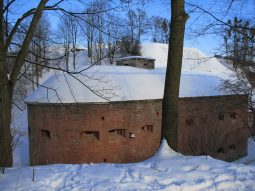
Warning: Attempt to read property "ID" on array in /home/klient.dhosting.pl/intui/pomorskie-travel.intui.eu/public_html/wp-content/themes/pomorskie-travel/single-poi.php on line 163

Warning: Attempt to read property "ID" on array in /home/klient.dhosting.pl/intui/pomorskie-travel.intui.eu/public_html/wp-content/themes/pomorskie-travel/single-poi.php on line 163
